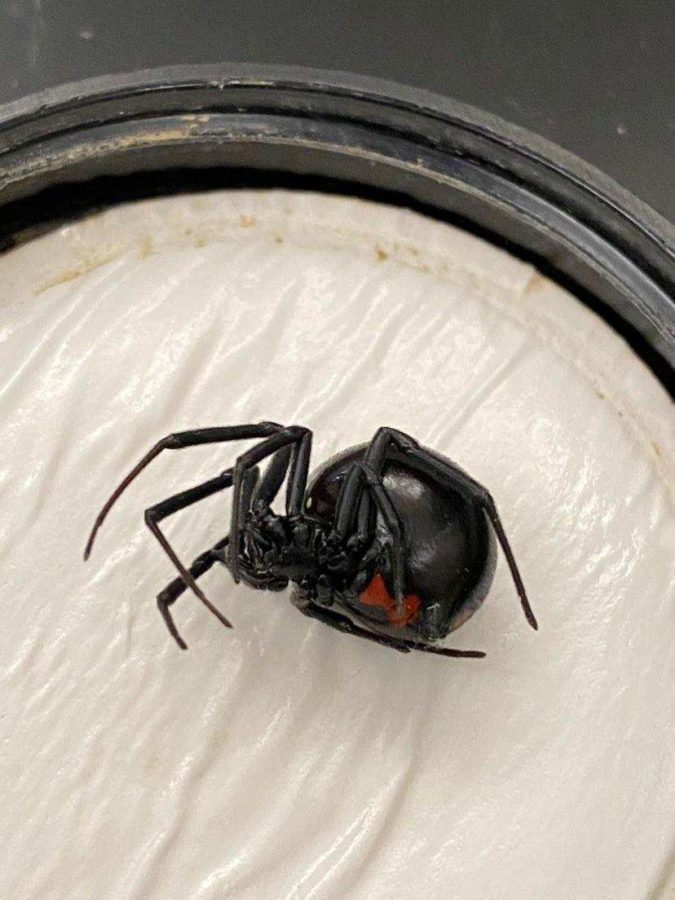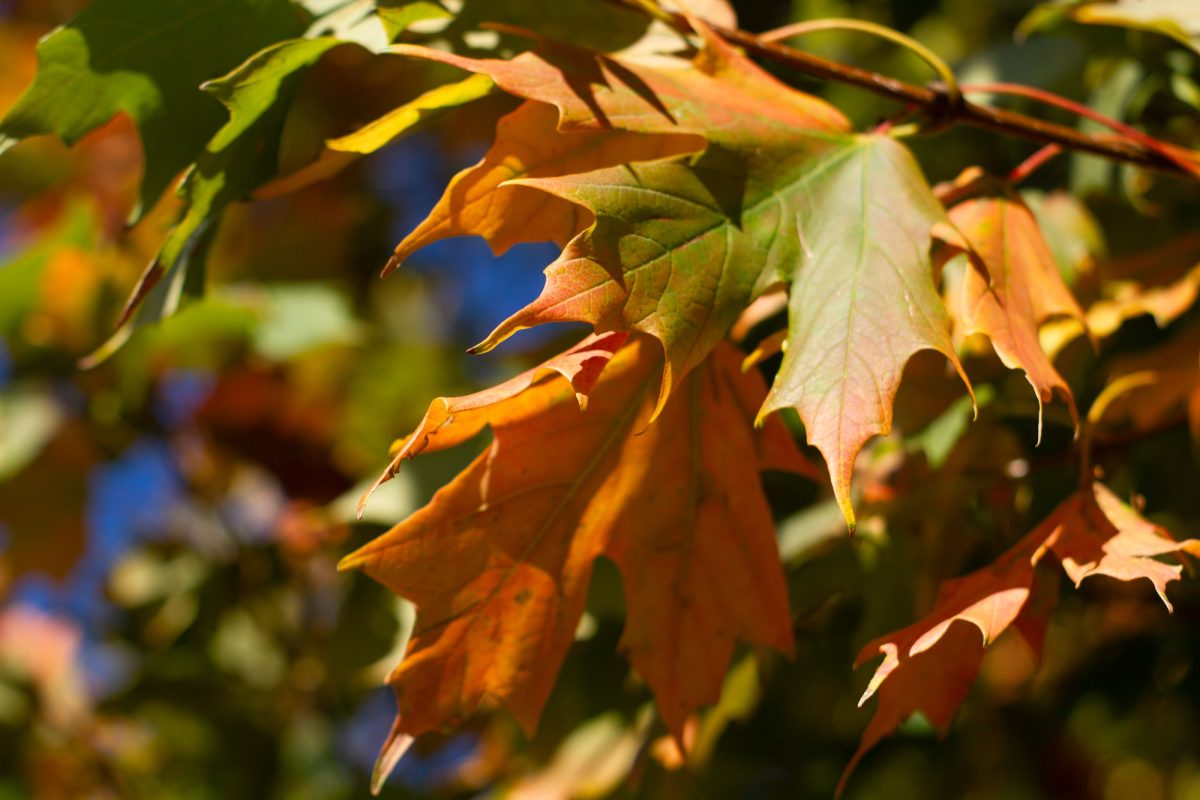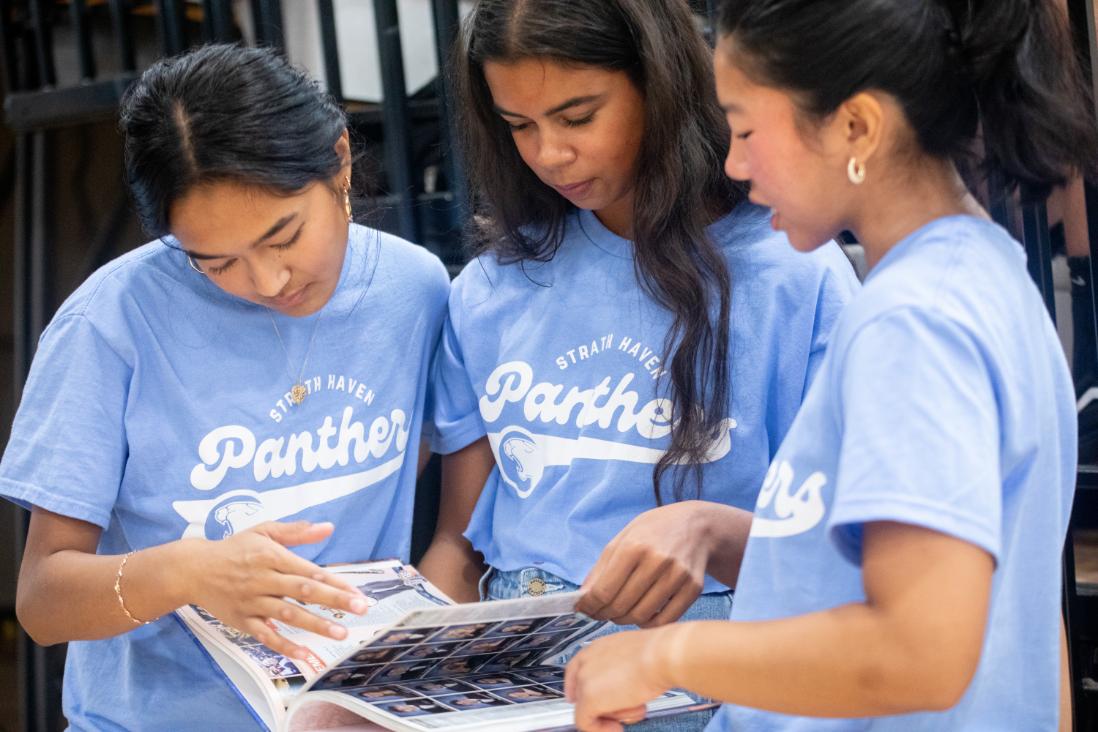During B Lunch on Monday, March 27, a spider walked through the cafeteria doors.
A group of students sitting by the windows first noticed the spider’s unusual attributes.
“We were like ‘Jesus Christ,’ it’s a humongous spider,” junior Storm Boswick said, one of the students to first notice the spider. “So we had Logan, the biggest guy, try to get it on its back so if we could see if it had the red stuff.”
The students identified the spider as a black widow by assessing its unique characteristics.
Black widows are the most venomous species of spiders in North America, and their venom is fifteen times stronger than that of a rattlesnake.
The students decided to take the spider to biology teacher Mr. Timothy Styer. Using the cap of a Core Hydration water bottle, Lulevitch scooped the spider into an empty bottle.
“I knew that [Black widows] don’t jump,” he said. “The only way it was going to bite me is if I grabbed it and squeezed it.”
Styer put the spider in a freezer, which killed it.
“I wanted to keep it,” Lulevitch said. “I was going to give it to my brother.”
Styer took the spider out of the freezer to show the spider to Ms. Kathy Freeman’s fourth block AP Environmental Studies class, according to Alex Falsone, an APES student and Bee Club member.
“We held it under a microscope. It was fascinating to look at, but there wasn’t much to do with it,” he said.
Although the spider was posted on the Bee Club Instagram story, Falsone was the only member who went to see it.
“I just went myself. I didn’t tell anyone that it was in Mr. Styer’s room, and only knew it was in there because of my fourth block APES class,” Falsone said.
Although black widows are rare, there is a northern variety of black widows that exists from Pennsylvania to Canada, according to Styer. Because black widows tend to be secluded, existing mostly in woodpiles and corners of buildings, he said that it was surprising that one was found in the cafeteria, where there are a lot of people.
“I would think it’s just an anomaly,” Styer said.
Styer identified the spider as a female that was not carrying eggs. If a black widow is ever discovered in the school again, he urges students to leave it alone and to notify the biology department.
“[The students] did the right thing by isolating it and minimizing the possibility of contact,” he said.
In a time of heightened interest in spiders, Styer hopes that students take the time to find out more about the animal. According to the Bee Club’s post, black widows rarely bite unless provoked, and less than two percent of bite victims experience life-threatening symptoms from their bites. According to Smithsonian Magazine, climate change may be expanding their range further north.
“Go learn more about them,” he said. “Not to fear them or not to go crush them at the first moment’s notice but to understand them.”





























